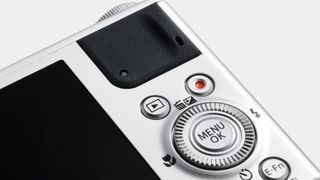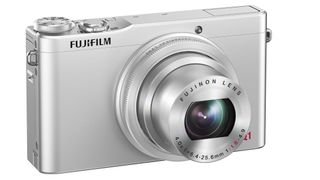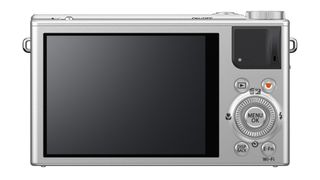Why you can trust TechRadar
It's the quality of the build of this model that struck us first. It's a solid little block, with a reassuring metal feel to the top plate, the dial and the lens mount. Although designed to be lightweight, the XQ1 has a certain authoritative presence in the hand, and a thumb catch on its rear is just enough to lend secure purchase.

The buttons, though few, are well laid out, and conform very much to the industry standard. The layout comprises a rotating rear wheel that doubles as a four-way rocker-switch surrounded by additional access points.
The on/off button is nicely recessed, so it's unlikely to be pressed by accident, and the camera starts up very quickly. Not only ready to shoot in no time at all, the XQ1 spends very little time on itself between shots, which means we can enjoy a second bite of the cherry if we miss the decisive moment the first time. This is a rare skill in a compact camera and one to be cherished.

We're big fans of control rings around lenses, and were pleased to see one here, completing the retro look with something functional. While the lens ring on the X20 is used to turn the camera on, in the XQ1 it can be used to deal with apertures, white balance, exposure compensation, ISO, drive modes, colour modes and even to control the zoom.
The ring feels nice and in all activities other than in controlling focal length it works well (it's slow and un-reactive as a zoom ring). However, it has no click-stops or lock, or anyway of keeping it from moving. As such, we found on numerous occasions that even the way we held the camera was altering the exposure compensation value, or giving us f/8 when we thought we were enjoying f/1.8. It needs some way for the user to restrain its enthusiasm for its task.

With few external buttons, presumably to make it look easy to use, the rear of the body falls somewhat short of supplying access to all the features an enthusiast photographer might want to use. Fuji has partly made up for this by creating an extra layer of functions for the rear wheel.
Pressing the E-Fn button brings up a virtual menu screen that adds an additional function for six of the rear buttons, thus giving access to features such as white balance, AF point positioning and film simulation modes. This provides a speedier route than having to go via the main menu, and is a reasonable price to pay for having a small body, but it can feel a little long-winded at times.

Wirelessly connecting the camera to a tablet (in our case a Sony Xperia Z) proved very easy once the Fuji Camera app was downloaded. The devices took a little while to find each other, but transfer is quick and, importantly, we were able to browse the camera's files as good-sized thumbnails and choose which to import. The app doesn't appear to offer remote controlled shooting, as is commonly a feature of these things.

